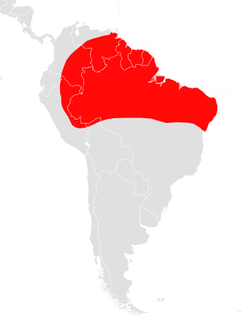| Brown fruit-eating bat | |
|---|---|
 | |
| Scientific classification | |
| Kingdom: | Animalia |
| Phylum: | Chordata |
| Class: | Mammalia |
| Order: | Chiroptera |
| Family: | Phyllostomidae |
| Genus: | Artibeus |
| Species: | A. concolor |
| Binomial name | |
| Artibeus concolor Peters, 1865 | |
 | |
| Brown fruit-eating bat range | |
The brown fruit-eating bat (Artibeus concolor) is a species of bat found in Brazil, Colombia, Ecuador, French Guiana, Guyana, Peru, Suriname and Venezuela.
